N.J. declares drought warning
ENVIRONMENT. Officials strongly encourage the public to reduce water use.
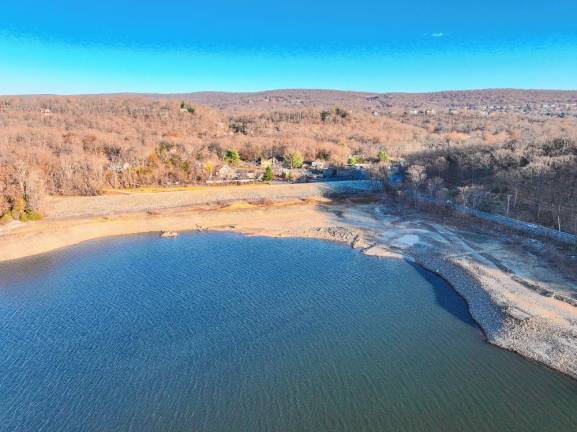
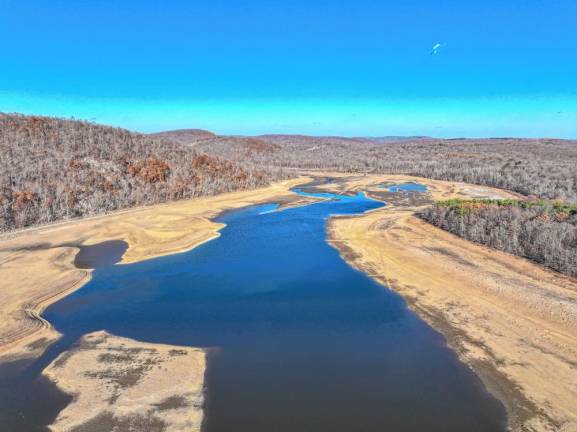
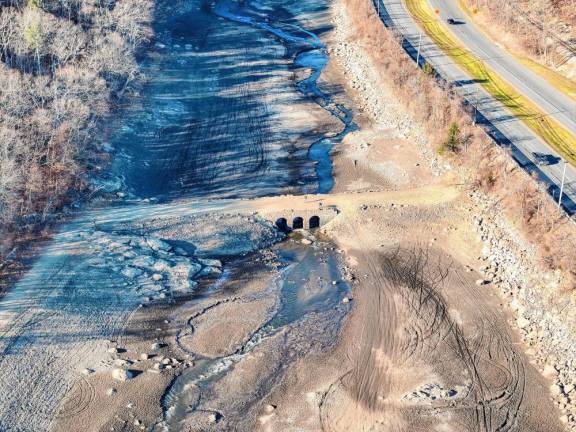
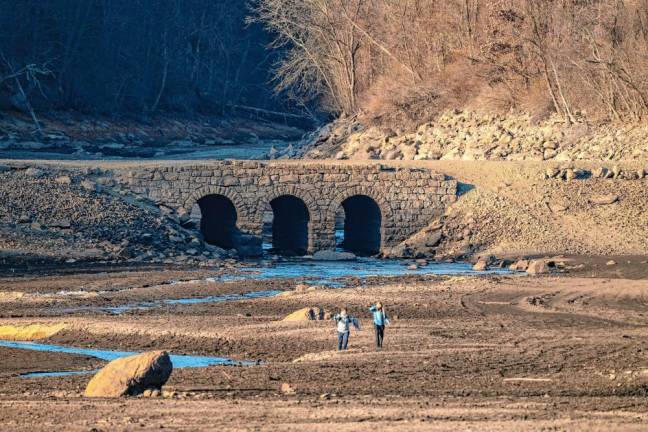
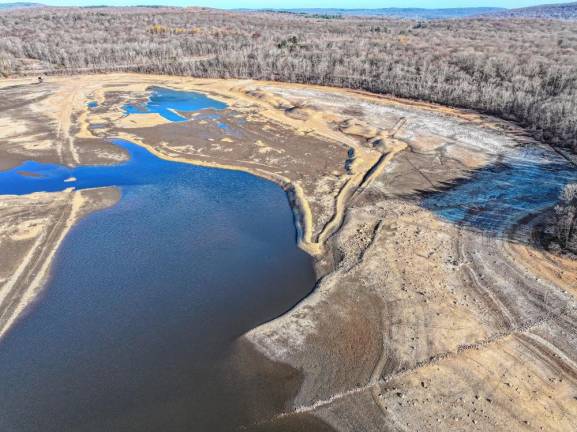
With wildfires burning after its driest September and October ever, New Jersey declared a drought warning Wednesday, Nov. 13.
Amid historically low precipitation, above-average temperatures and deteriorating water-supply conditions, Gov. Phil Murphy and Shawn LaTourette, commissioner of the state Department of Environmental Protection (DEP), strongly encouraged the public to reduce water use.
A drought warning is the next step after a water supply drought watch, which was declared in mid-October. It enables the DEP to more closely manage water systems by directing water transfers among systems, controlling releases from reservoirs, and modifying the rate of flow in streams and rivers to balance ecological protection and needs of water suppliers.
If the dry conditions continue, New Jersey could declare a drought emergency, under which businesses and homes would face mandatory water restrictions.
Several leaders of public water systems urged New Jersey to go straight to a drought emergency.
Tim Eustace, executive director of the North Jersey District Water Supply Commission, said the Wanaque Reservoir is at about 45 percent of capacity.
“Using drinking water to water lawns is kind of crazy,” he said. “I would really like to move to a drought emergency so we can stop people from watering their lawns.”
On Wednesday, Murphy said, “New Jersey is experiencing unprecedented weather conditions - as a result of climate change - that require us to take these precautionary measures now.
“It can be challenging to adjust our daily habits, but it is imperative that we all work together, heed the guidance to conserve water and use the utmost caution outdoors to reduce the risk of wildfire as dry conditions continue statewide.”
LaTourette said, “Climate change is driving our record low precipitation and above-average temperature recorded statewide in September and October. This combination of events has resulted in decreased streamflow and groundwater levels, which harms our available water supplies.
“Taking these measures now and encouraging reduced water use will help provide some measure of protection from the weather uncertainty we face entering winter.”
The state last declared a drought warning in October 2016. It persisted in some parts of the state until August 2017.
Public hearing
The DEP held an online hearing Tuesday, Nov. 12 to update water suppliers and the public on water supply conditions, receive their input, and assess all available water supply management options.
But officials would not answer questions, including whether any part of the state is in danger of running out of drinking water or adequate water to fight fires, which are burning in nearly a half-dozen locations. The Associated Press left a message seeking comment from the department after the meeting.
The New Jersey Forest Fire Service says conditions in the state are the driest they have been in nearly 120 years.
State geologist Steven Domber said water levels are declining across New Jersey.
“They are well below long-term averages, and they’re trending down,” he said. “They will continue to drop over the coming weeks unless we get significant rainfall.”
He said about half the public water systems in New Jersey are experiencing close to normal demand for water, but 40 percent are seeing higher demand than usual.
It could take 10 inches of rain to meaningfully improve conditions in New Jersey, officials said. But forecasts don’t call for that.
The combination of higher than normal temperatures, severely diminished rainfall and strong demand for water is stressing water supplies, said David Robinson, the state climatologist. He said New Jersey received 0.02 inches of rain in October, when 4.19 inches is normal.
So far in November, the state has gotten a quarter- to a half-inch of rain. The statewide average for the month is 4 inches.
Since August, the state received 2 inches of rain when it should have gotten a foot, Robinson said.
“A bleak picture is only worsening,” he said.
More wildfires
New Jersey has been battling numerous wildfires in recent weeks, including at least five last week.
The largest, the Jennings Creek Wildfire, has burned nearly 5 1/2 square miles on the New Jersey-New York border and led to the death of a New York parks worker. That fire was 90 percent contained in New Jersey, officials said.
Conditions also are dry in New York, which issued a drought watch last week.
New York City Mayor Eric Adams mayor urged residents to take shorter showers, fix dripping faucets and otherwise conserve water.
Just 0.01 inches of rain fell last month in Central Park, where October normally brings about 4.4 inches of precipitation, National Weather Service records show.
City Department of Environmental Protection Commissioner Rohit Aggarwala said it was the driest October in more than 150 years of records.
Jeff Tober, manager of Rancocas Creek Farm in the bone-dry New Jersey Pinelands, said his farm has gotten 0.6 inches of rain in the past 87 days. “It’s been pretty brutal.”
Since early October, the New Jersey Forest Fire Service has responded to 537 wildfires, more than 13 times more than the number in the same period last year.
The New Jersey Office of Emergency Management has deployed the state’s All-Hazards Incident Management Team to supplement operations.
Since the start of the year, nearly 1,300 wildfires have burned more than 11,000 acres. The average number of fires a year since the year 2000 has been 1,071 wildfires and 4,000 acres burned.
Mandatory statewide Stage 3 fire restrictions remain in effect. They prohibit all fires unless they are contained in an elevated stove using only propane, natural gas or electricity.
No wood or charcoal fires are allowed, and the use of kerosene or gas torches of any kind is prohibited.
Conserving water
The public is strongly encouraged to follow these tips to reduce water use:
• Winterize and shut off irrigation systems as soon as possible.
• Only use a watering can to water flowers and shrubs or allow them to go dormant for the season.
• Use a broom to sweep the sidewalk, rather than a hose.
• Use a commercial car wash that recycles water because washing a car at home typically results in more water use.
• To save water at home, fix leaky faucets and pipes.
• Consider replacing toilets with a low-flow version; this can save about 11,000 gallons a year.
• Upgrade showerheads to low-flow versions, which can save about 7,700 gallons a year.
• Upgrade faucets or install faucet aerators; this can save about 16,000 gallons a year.
Widespread drought
Drought conditions are affecting more than half of the United States, with all of New Jersey and Delaware and large parts of eastern Pennsylvania and southern New York experiencing at least moderate drought conditions, according to the National Drought Mitigation Center’s U.S. Drought Monitor.
The DEP uses specific indicators to gauge the impacts that significantly reduced precipitation has had on water supplies. These include reservoir levels, stream flows and levels in shallow groundwater sources, known as unconfined aquifers, which are important for the replenishment of streams and reservoirs long-term.
The southern half of the state, in particular, has been grappling with below-normal precipitation, with deficits approaching 10 inches below normal in the past three months.
Major reservoir systems are below their normal water levels for this time of year and may need transfers of water through interconnected infrastructure to balance storage.
New Jersey’s Northeast region - primarily served by 12 reservoirs operated by four water suppliers serving the most densely populated region of the state - have dropped to 60 percent capacity, compared about 72 percent, which is usual for this time of year.
The remaining portions of the state are not served predominantly by reservoir-backed surface water supplies but instead have a mix of river-based surface water or groundwater wells.
In the southern coastal region of the state - Atlantic, Cape May and Cumberland counties - groundwater is severely dry, while rainfall and streamflow are extremely dry.

